Extracted and adapted from Swordplay & Swashbucklers: Hollywood Ships & Shores in Miniature
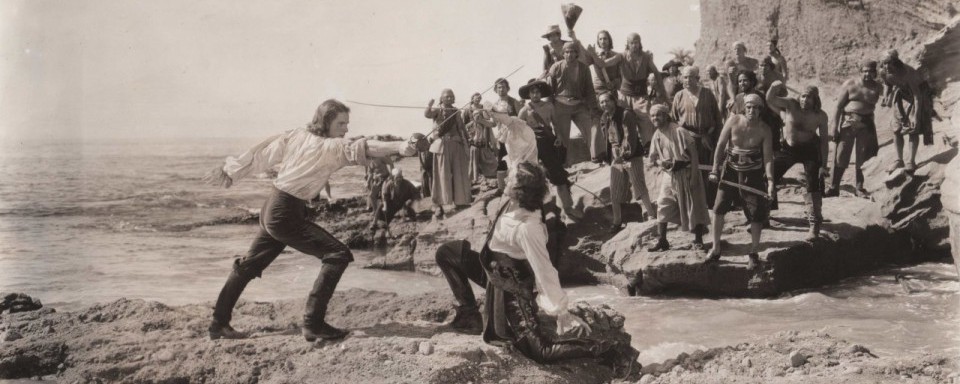
Before the advent of CGI, many swashbuckler films used models of ship and shore, along with full-size ships built on sound stages, to both recreate environments no longer available and also to save money. To some degree the early miniatures may seem quaint today, as compared to CGI, although in my opinion bad CGI is worse–more jarring to the eye–by far than an obvious model.
These old sets and scenes evoke nostalgia for the entire spectacle of old Hollywood swashbucklers: the cinemas with their great screens and clicking film projectors, the lasting impressions left by thundering broadsides and clashing swords, and above all the image of pirate ships in tropical waters. Here are a few:
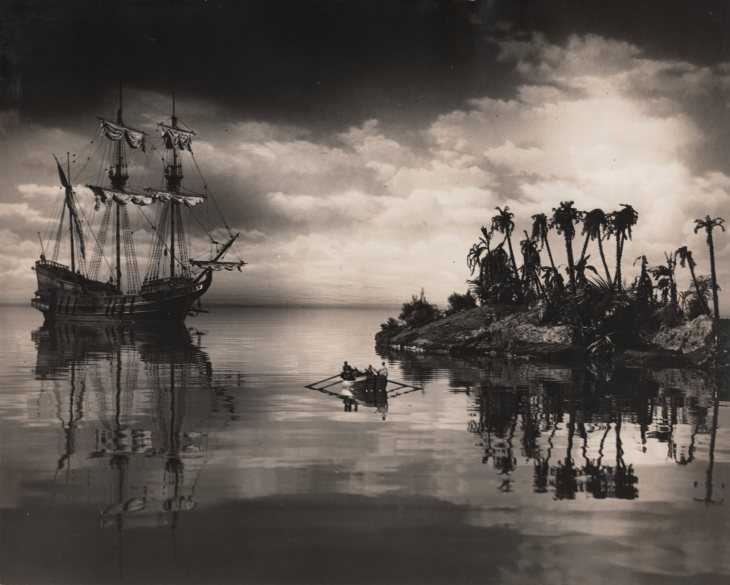
Above, the Albatross, commanded by Capt. Geoffrey Thorpe (Errol Flynn) arrives in a secluded cove on the Isthmus of Panama in order to raid the silver trains. The film scenes set in the Old World are in black and white, while those in the Americas are in sepia.
Only the film title is actually based on the novel by Rafael Sabatini, which tells the story of an English gentleman who turns Barbary corsair in an act of revenge. The 1940 film is a not even thinly-veiled wartime propaganda piece, albeit an enjoyable one. English sea dogs are renamed in the script as patriotic sea hawks suppressed by treasonous machinations until the doughty hero (Errol Flynn) reveals the treachery and England arms the sea hawks against Nazi Germany Imperial Spain. For more information try The Sea Hawk, edited by Rudy Behlmer. It’s a fun read for anyone interested in the script and the film’s history.
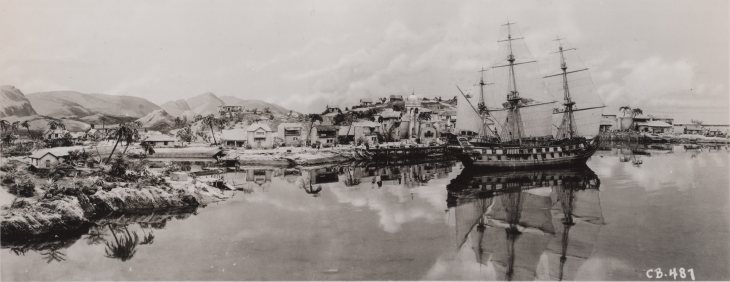
Next, we have the models of Port Royal and the French flagship used in the finale. This image is not of an actual scene from the 1935 Captain Blood starring Errol Flynn, Olivia de Havilland, and Basil Rathbone, but of the set prior to shooting.
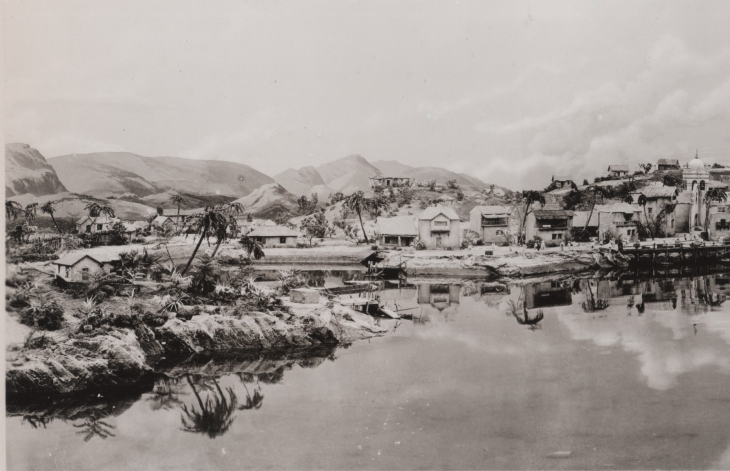
Of course, the real Port Royal looked nothing like this. It was actually crammed with English-style brick buildings of two and even three floors, unlike this Southern California Spanish colonial revival-influenced town. But it’s sets like these in Hollywood swashbucklers that have influenced our notions of what the seventeenth century Caribbean looked like. In fact, the region at the time had a wide variety or environments and architecture.
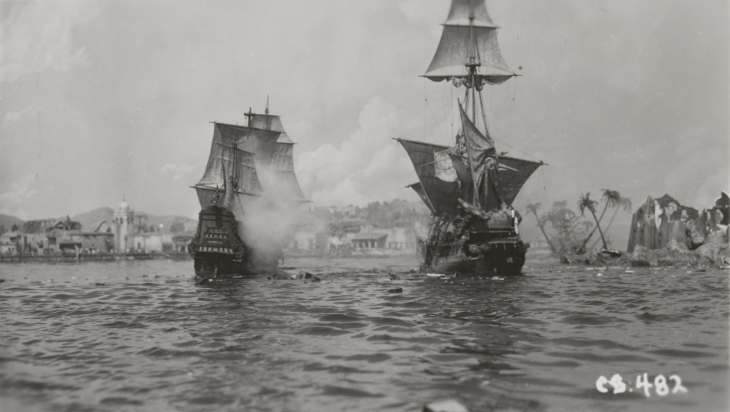
Above we have the battle in Port Royal harbor during the finale of Captain Blood: the Arabella on the left versus the French flagship on the right. N. B. Royal sails (the smallest on the ship on the right, the fourth sail from the bottom) were not used in this era. Their use here is an anachronism. In fact, only exceedingly rarely was the topgallant sail (the third sail from the bottom, used on “tall ships” on the fore and main masts) seen on the mizzenmast or sprit-mast on the bowsprit. I know of only two seventeenth century instances, each noted as being highly unusual. One was Kidd’s Adventure Galley in the very late seventeenth century, the other was a Spanish ship in 1673.
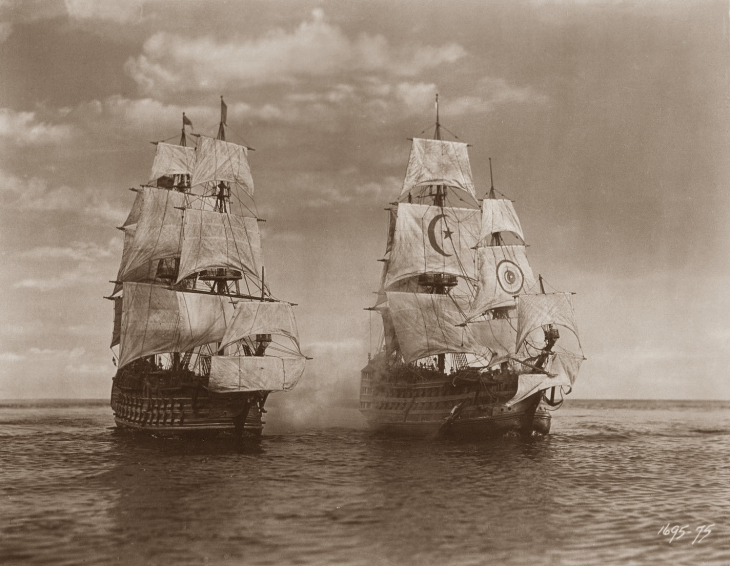
Over-large pirate ship and treasure ship of the “Great Mogul” in Against All Flags. The ships are engaged under full sail, a practice generally not seen in reality except in the case of a running fight, but quite common in Hollywood because it looks good. Here, both ships would have stripped to “fighting sail” for a variety of reasons, including simplified ship-handling in action. The film stars Errol Flynn, as Brian Hawke, in one of his last swashbucklers, followed finally by The Master of Ballantrae in 1953 and Crossed Swords in 1954.
***
Scenes from The Sea Hawk using above-described ship models, miniatures, and techniques:
— Tim

Stunning posting, Gent! You old Sea Dog!